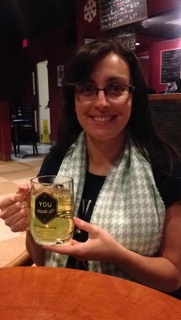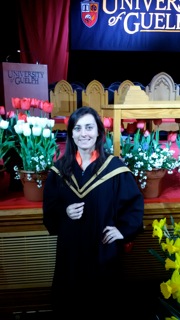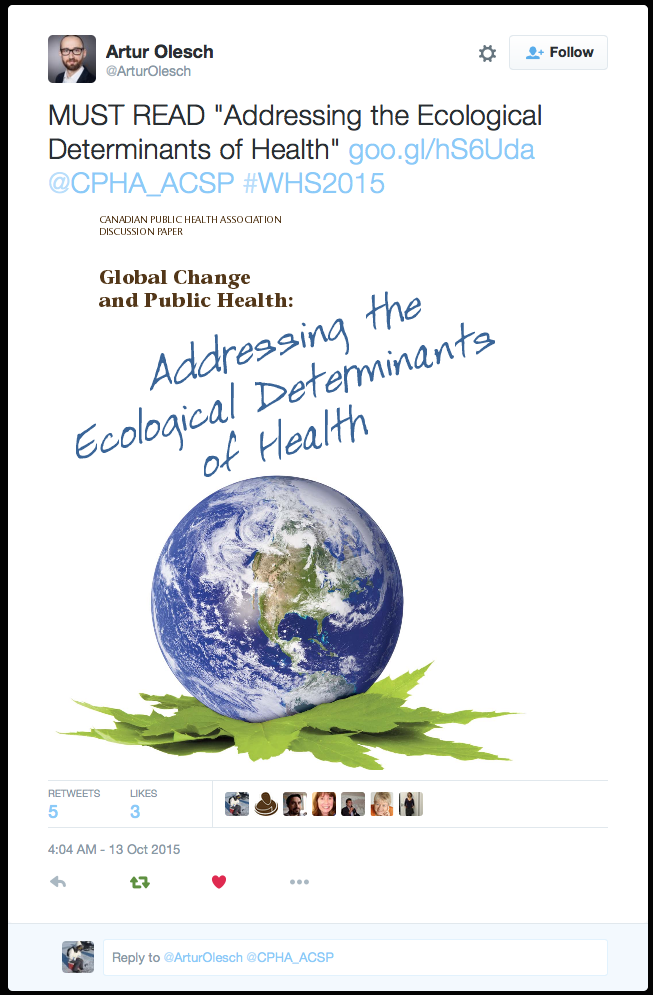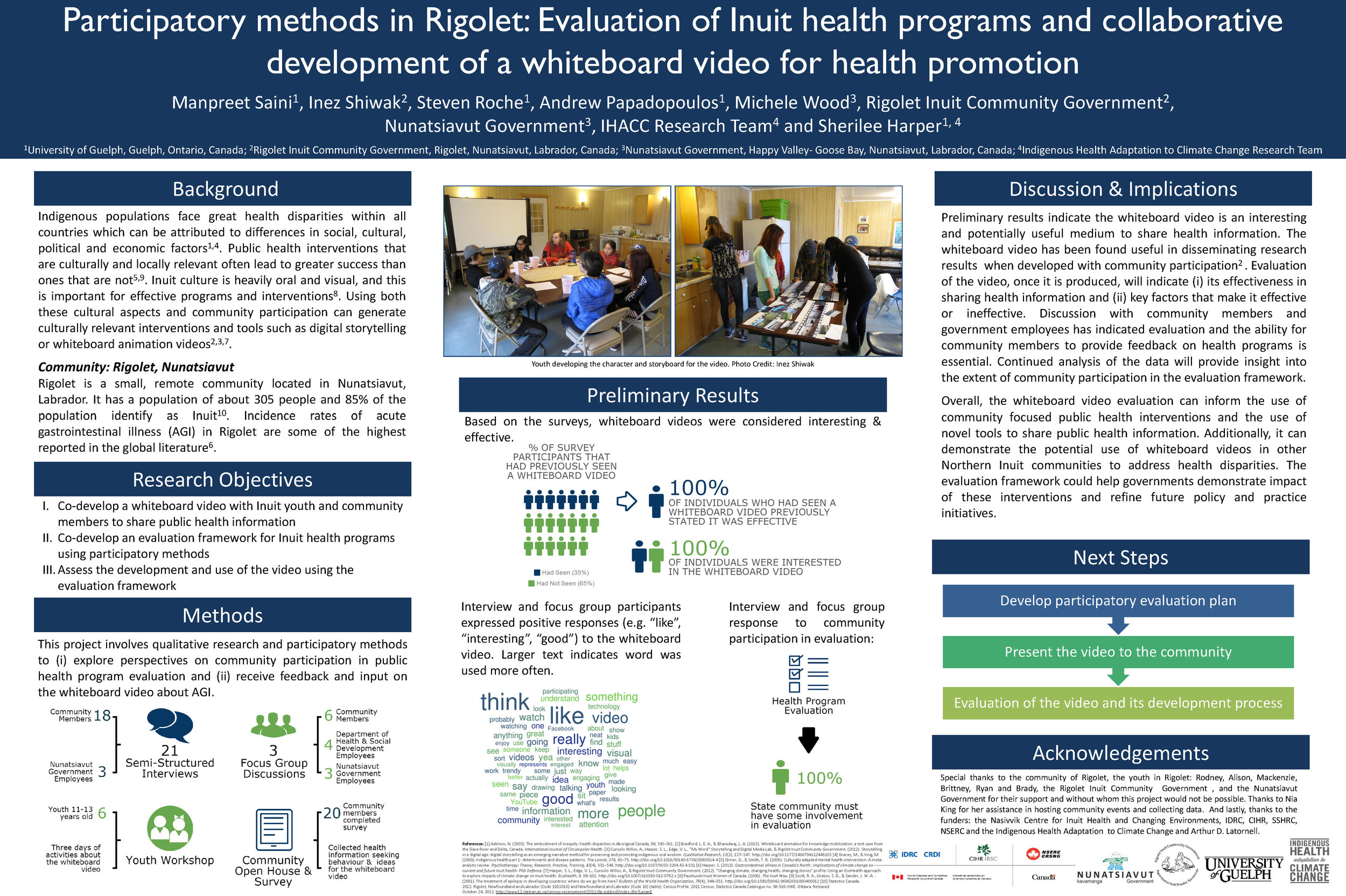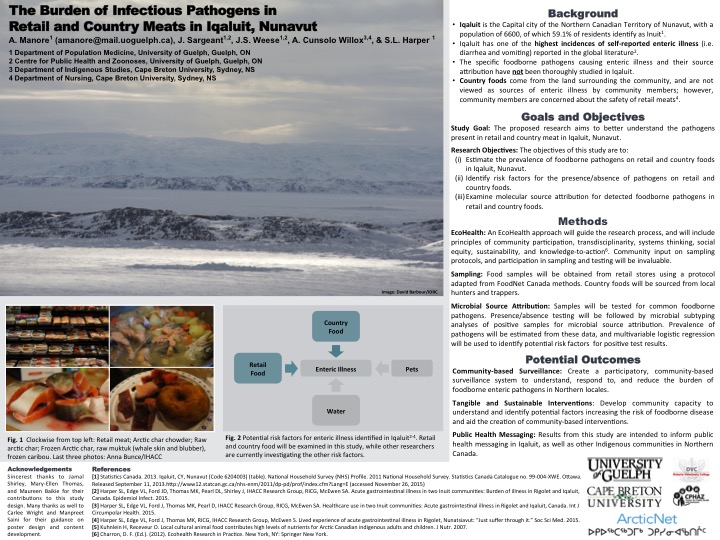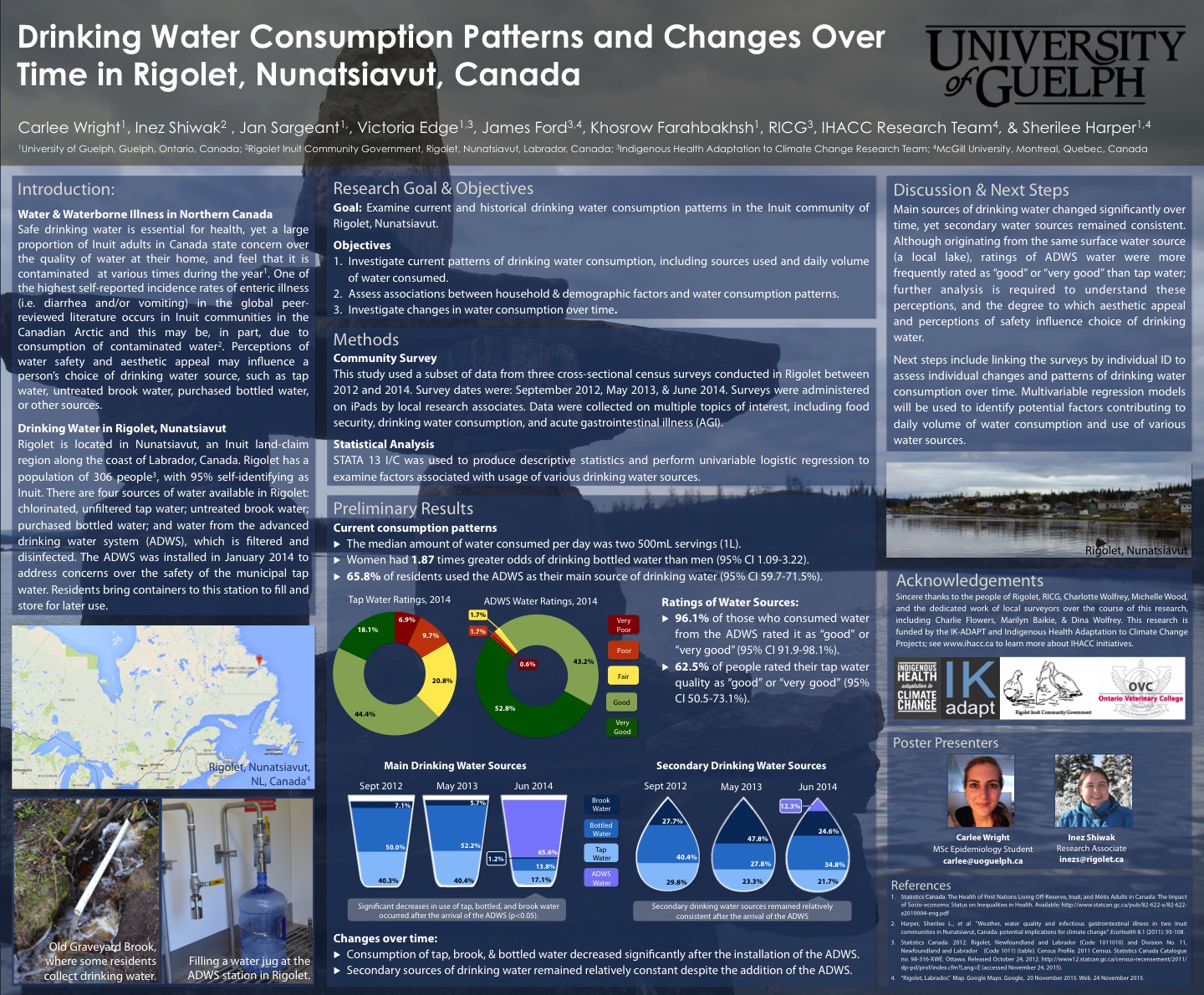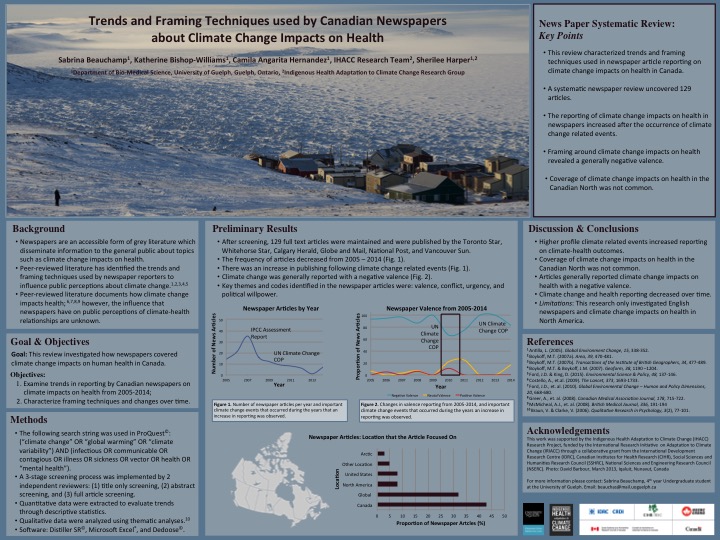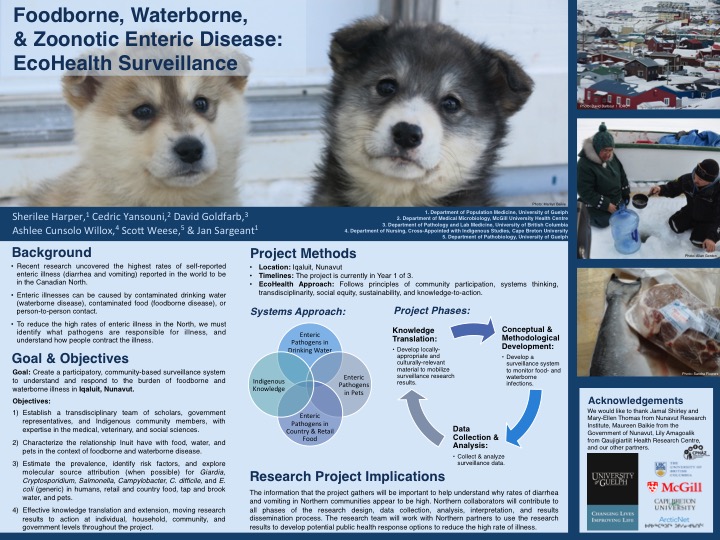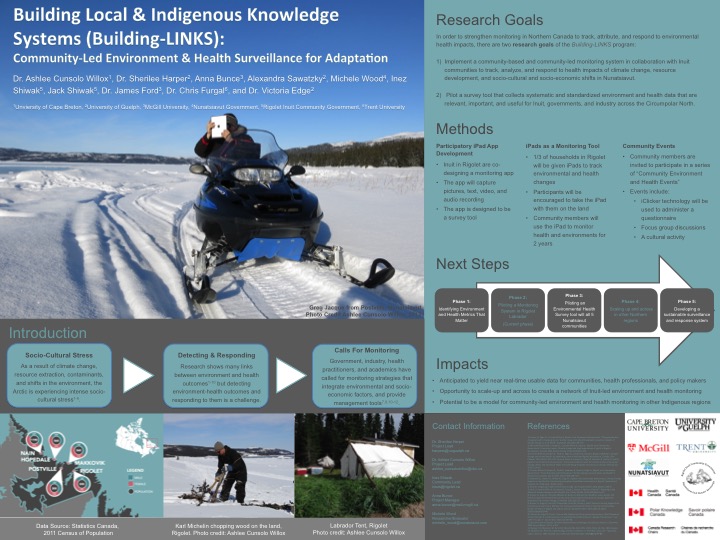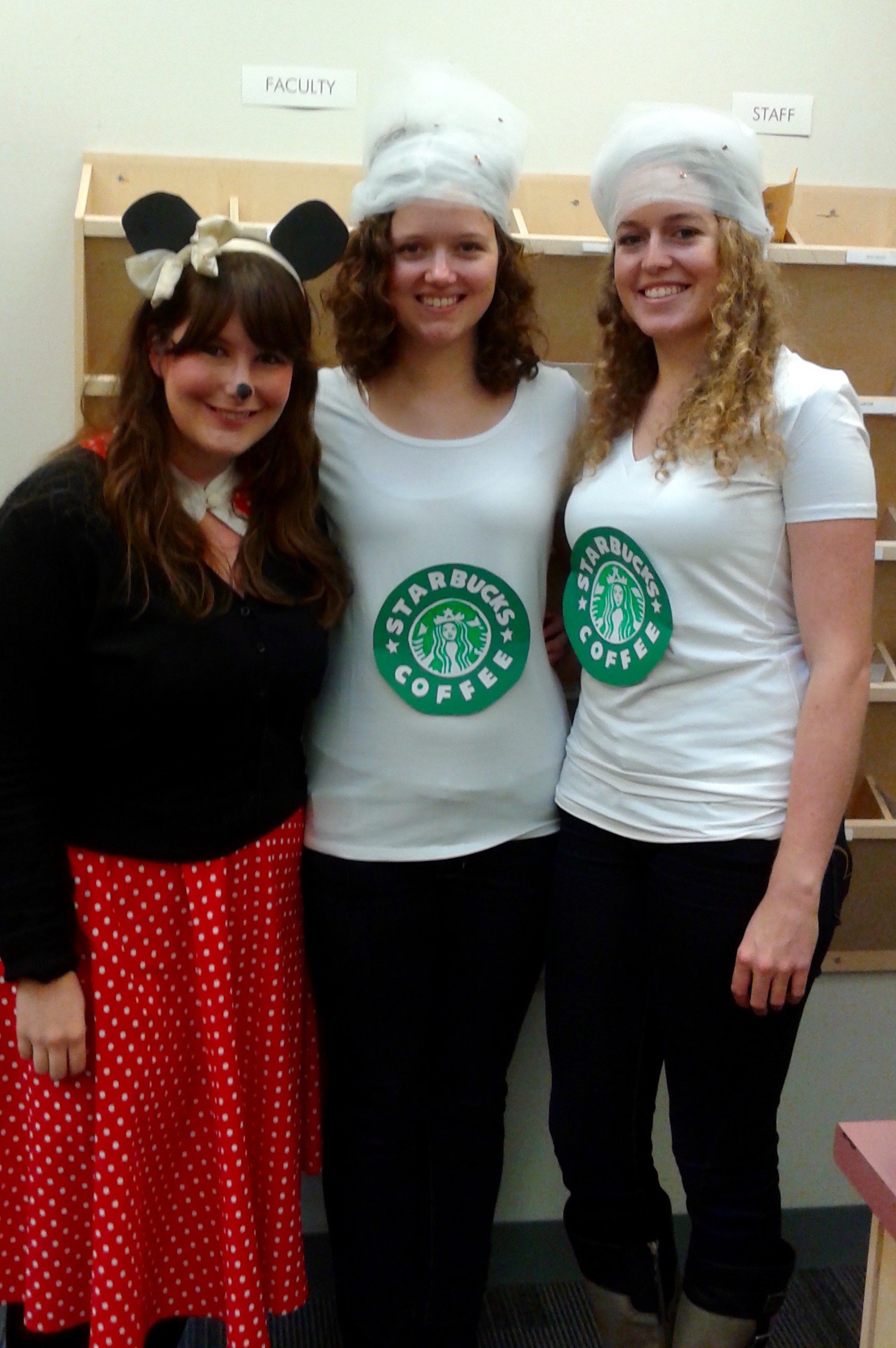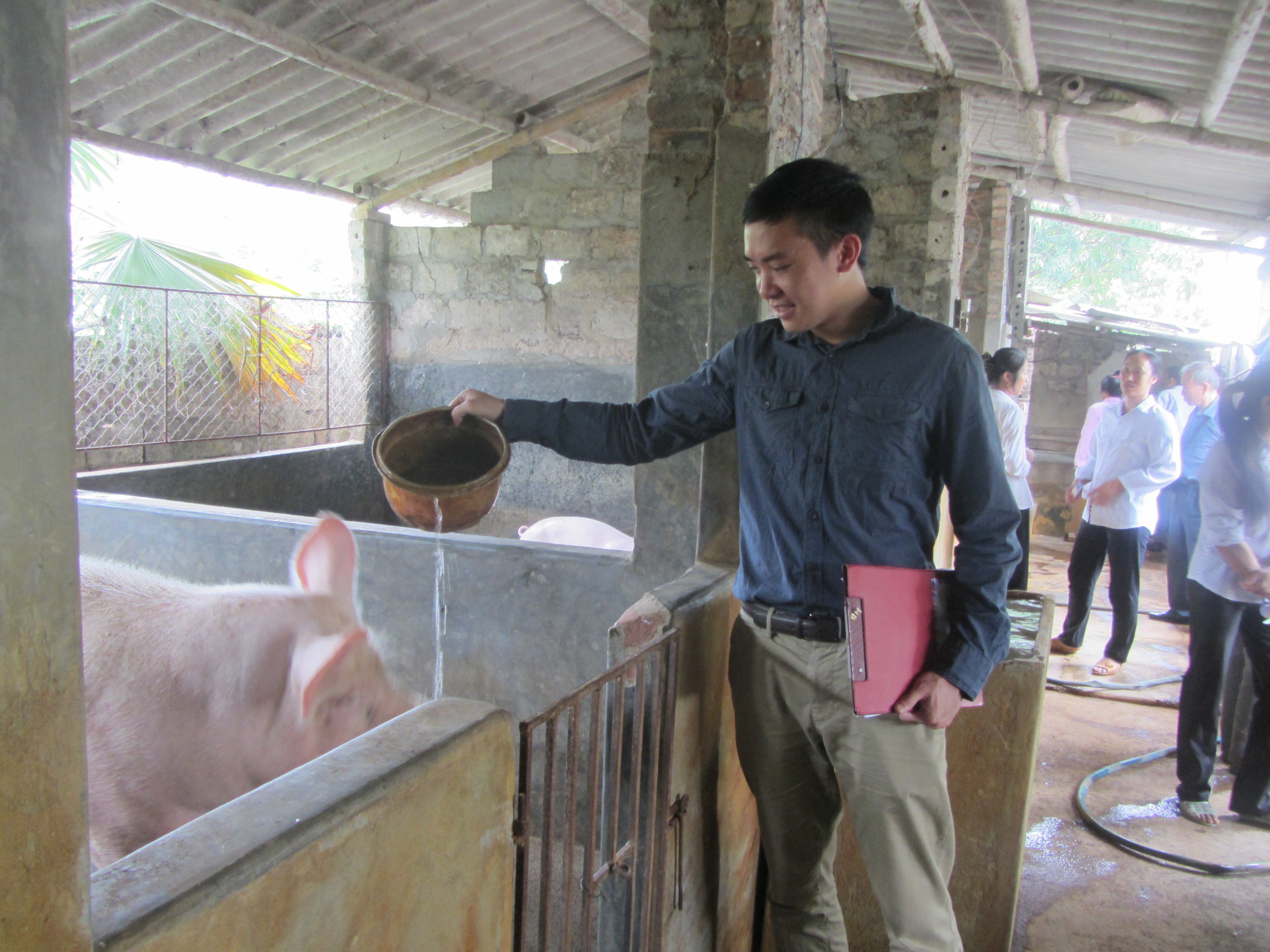Written by Alexandra Sawatzky (PhD Student) Almost immediately upon returning from my trip to Rigolet in February, I was faced with the unavoidable, arguably unanswerable, question: so, how was it?
Even after having had time to reflect and process everything, I still struggle with answering this question. There is no way I can articulate exactly how I feel about Rigolet, about the incredible people I get to work with here, and about the project that I am lucky enough to be a part of. I think this struggle with putting my feelings into words is largely due to the fact that the project, the people, and the place are all intertwined, and they all became a part of my life so easily and so quickly that my words have trouble catching up to my emotions.
Before my first trip to Rigolet this past October, I was incredibly nervous. I was so intimidated at the prospect of being involved in such a large, interdisciplinary project. I didn't exactly know where I would fit, let alone what the community would think of me. But as soon as I stepped off that first Air Labrador flight, all my fears disappeared and I knew I would never be the same.
Fast forward a few months, and before I knew it, I was back on a plane headed North with Dan, Oliver, and Ashlee. It was an amazing feeling, and an enormous privilege, to have the opportunity to return to Rigolet. Again, I was nervous, but this time my pre-trip jitters had more to do with being overwhelmingly excited to continue moving this project forward, to reconnect with people in the community, and to experience winter in all its Northern glory.
For a bit of background, our research involves the participatory development of a surveillance system, led by the community of Rigolet, to to track and respond to changes in the environment and resulting impacts on health and wellbeing. The basis of the approach we're taking to build this project is to listen, learn, understand, and then respond to what the community needs and wants. To start this process, back In October we asked members of the community five main questions in a series of interviews and focus groups: (1) what are some important issues with regards to the environment and health; (2) what sorts of changes in the environment and resulting health impacts are you noticing in your community; (3) of these changes, what do you think is important to monitor/track; (4) how are you already keeping track of these changes; and (5) what sorts of tools/technologies (if any) are you using to do so?
As I was preparing to return in February, I thought critically about what we had learned from the community thus far, and how we might build off these initial discussions surrounding important environment-and health-related issues. However, in order to build from these discussions and move forward with the project in an appropriate way, I first needed to develop a deeper understanding of the reasons why these issues were important, who they were important to, and how they were prioritized. In short, I needed to ask some new questions.
I sat down with many of the same individuals who I had met with in October to present the preliminary findings and ask for their feedback. Then, I asked: (1) why are these issues important to you; (2) how would you prioritize these issues; (3) what are some ideas you have that could help make this program engaging and easy for people to use?
With each person or group I spoke with, my mind was blown over and over again by the depth and breadth of wisdom that is held in Rigolet. One of the key points brought up in this round of brainstorming sessions was that we need to work together to create a program that wouldn't necessarily feel like a "program" - we need to create something that can be seamlessly incorporated into day-to-day life. Conversations like these made me realize over and over again what an honour it is to be working with and learning from this community. As always, the ways in which people described their connections to and relationships with the land absolutely blew me away. Although I will never even begin to know the true depth of the love that’s shared here between the land and its people, I am so grateful to be taking part in this learning journey.
During our trip, we also had the opportunity to engage in some hands-on, experiential learning on the land. Within a few hours of arriving in Rigolet, we took off with Sandi and Karl - our gracious hosts and dear friends - to spend the weekend at their cabin on English River – about a 2.5-hour skidoo ride outside of the community (mind you, this same trip typically takes Sandi and Karl about 1.5 hours). From the moment we left, we knew this would be the adventure of a lifetime. We left Rigolet in the late afternoon, and as we were making our way across Lake Melville we witnessed the most stunning sunset any of us have ever seen. The only description that somewhat captures this experience is that it felt like gliding above the surface of the clouds; hard to tell where the ice ended and the sky began. Unfortunately, I don’t have any photos of this magical experience because it was way too cold to stop and pull out my camera. Yet, there is something to be said for just living in the moment and absorbing the surroundings without viewing them through a lens. Moreover, there is no way a photo could have captured that kind of beauty anyway (at least, no photo that I could take).
Our weekend at the cabin was filled with fun, adventures, and delicious food (everything tastes better when cooked on a wood stove). We had a massively successful ice fishing escapade, and Oliver and I even skinned our first rabbits under Sandi’s patient instruction and watchful eye. Sandi and Karl, I don’t think we can thank you enough for keeping us full, safe, warm, and smiling.
This experience also gave us many important insights that will be absolutely crucial to incorporate into our project as we learn to better understand how technological tools can help people keep track of various environmental observations and changes while they are on the land. For example, our phones and cameras would freeze at times, so using them outside in certain conditions was not feasible and is something we need to account for in developing the project. There was definitely something to be said about learning how to navigate through these unanticipated challenges firsthand.
Upon reflection, I am realizing that this project, these people, and this place all share the same part of my heart - a part of my heart that I most certainly didn’t realize was missing until I found it. I feel so fortunate to be working with a team of community partners and researchers that is so incredibly supportive of each other. We hold the same basic values, share a deep and indescribable love of the North, and we take our research as seriously as we do our long underwear and scavenger hunts. Through these experiences, I’m finding that in order to do your best work and be your best self, it helps to be surrounded by people who bring out the best parts of you.
In terms of the place, its immense beauty never ceases to amaze me. There are really no words, only feelings. The colours are brighter, the food is tastier, the air is fresher, and life feels more authentic. It’s a place where I can let my guard down, open myself to change, and challenge myself to grow. But no matter what I say about it or how I try to describe it, there is so much more that I can't even begin to describe. That which no words can capture. I truly feel as though I left a part of my heart there. This is something I struggle with articulating because I know that no matter how much I learn about/love this place, I will always be an outsider, a stranger to the land. I will never know the love that these people have for their homeland, and that which the land has for them. So thank you, Rigolet, for welcoming us Southerners with open arms and allowing us to share in your incredible beauty and wonder. As I'm slowly running out of words to capture how I feel about working, learning, loving, and growing in this place, I'll call upon the help of Richard Wagamese, an Ojibway author:
“To be struck by the magnificence of nature is to be returned again, in those all too brief moments, to the innocence that we were born in. Awe. Wonder. Humility. We draw it into use and are altered forever by the unquestionable presence of the Creator. All things ringing true together. Carrying that deep sense of communion back into our work-day life, everyone we meet becomes the direct beneficiary of our having taken the time for connection, prayer, and gratitude. This is what we are here for - to remind each other of where the truth lies and the power of simple ceremony.”

